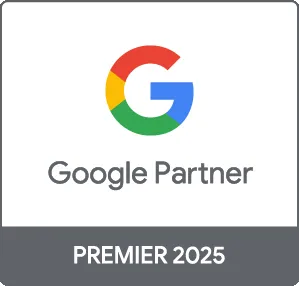Google Ads is a powerful tool for businesses seeking to increase their online visibility and drive targeted traffic to their websites. With over 3.5 billion searches conducted on Google every day, leveraging Google Ads allows you to reach potential customers actively searching for your products or services. In this comprehensive guide, we will explore how to use Google Ads effectively, from setting up your campaigns to optimizing them for the best results.
Understanding Google Ads
Google Ads is a pay-per-click (PPC) advertising platform that allows businesses to display ads on Google's search results pages, as well as on other websites within Google’s Display Network. Advertisers bid on specific keywords relevant to their offerings, and ads are shown based on these bids. The goal is to attract clicks and conversions, turning interested viewers into customers.
1. Setting Up Your Google Ads Account
To begin using Google Ads, you'll need to set up an account. Here’s a quick overview of how to do it:
- Create an Account: Visit the Google Ads website and sign up using your Google account.
- Define Your Goals: Identify what you want to achieve, whether it’s increasing website traffic, generating leads, or driving sales.
- Select Your Campaign Type: Choose between Search, Display, Shopping, or Video ads, depending on your objectives.
2. Keyword Research and Targeting
Your ad’s performance relies heavily on the keywords you choose. Here's how to conduct effective keyword research:
- Use Google Keyword Planner: This free tool helps you find keywords related to your business, along with search volumes and competition levels.
- Analyze Competitors: Look at what keywords your competitors are targeting to gain insights into potential opportunities.
- Long-Tail Keywords: Focus on long-tail keywords that have lower competition and higher intent from searchers.
3. Crafting Compelling Ad Copy
Writing effective ad copy is crucial for capturing attention and encouraging clicks. Consider these tips:
- Highlight Unique Selling Points: Clearly communicate what makes your product or service stand out.
- Use Strong Calls-to-Action: Encourage users to take action, such as “Shop Now” or “Get a Free Quote.”
- Keep It Concise: Make sure your message is clear and direct, staying within the character limits set by Google.
4. Budgeting and Bidding Strategies
Setting the right budget and bid strategy is essential for maximizing your ad spend:
- Daily Budget: Determine how much you’re willing to spend each day on your campaigns.
- Bidding Strategies: Choose between manual bidding, where you set your bids, or automated bidding, where Google manages bids for optimal performance based on your goals.
5. Monitoring and Optimizing Your Campaigns
After launching your Google Ads campaigns, regular monitoring is necessary for continued success:
- Track Key Metrics: Monitor clicks, conversions, click-through rates (CTR), and cost-per-click (CPC) to gauge performance.
- A/B Testing: Conduct A/B tests on different ad copies, keywords, and bids to determine the most effective strategies.
- Adjust and Refine: Be prepared to make ongoing adjustments based on performance data to improve your campaigns.
Conclusion
Using Google Ads effectively can significantly enhance your online presence and drive valuable traffic to your business. By following the steps outlined in this guide—setting up your account, conducting thorough keyword research, crafting compelling ad copy, budgeting properly, and continuously optimizing your campaigns—you can maximize your results and achieve your marketing objectives. If you need assistance with Google Ads, Prebo Digital offers comprehensive services to help you succeed online.





